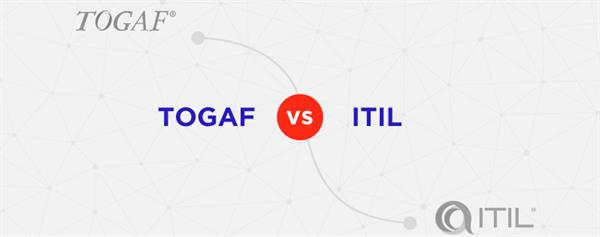In the realm of IT business processes, each organization seeks a robust operational structure. Various frameworks provide guidance towards achieving objectives centered on security and compliance. To ensure smooth operations, enterprises widely employ the two foremost IT management frameworks: ITIL and TOGAF.
However, these frameworks exhibit notable differences. Without a clear understanding of these distinctions, organizations struggle to determine which framework best suits their specific requirements. This impedes their ability to propel enterprise architectural development and streamline IT service management effectively.
Let's delve into this article, delving into the ITIL vs. TOGAF frameworks, to assist you in making well-informed decisions.
What is ITIL?
Originally coined by the Central Computer and Telecommunications Agency (CCTA) of the British government in the 1980s, the Information Technology Infrastructure Library (ITIL) has evolved into a standalone framework. ITIL aims to standardize the selection, planning, delivery, maintenance, and handling of IT services throughout an organization's lifecycle. Its objectives include enhancing productivity and ensuring consistent service delivery. By adhering to ITIL best practices and guidelines, IT administrators can evolve from merely offering backend support to becoming strategic partners in business services. The adaptability of ITIL ensures alignment of IT department expenditures and activities with evolving business requirements.
Key Components of ITIL
The most recent updates to the comprehensive framework of ITIL, introduced in 2011, have garnered significant popularity due to their ease of implementation and configuration. These updates align with ongoing advancements and the efficient functioning of ITIL. Using the latest terminology, the concepts and objectives are categorized as follows:
Service Strategy: Emphasizes providing consumers with necessary levels of commitment and satisfaction without requiring any investment or loss on their part.
Service Portfolio Management: Involves managing the range of services a provider oversees, including identifying and assessing each service's role within the IT process through components such as the Service Pipeline, Service Catalog, and Retired Services.
Strategy Operations: Focuses on ensuring effective and seamless regular IT operations while providing an opportunity to review existing strategic plans.
Demand Management: Involves analyzing and shaping client demand using user profiles and Patterns of Business Activity (PBA).
Financial Management: Encompasses all accounting, budgeting, and transactional procedures related to the IT department.
Warranty, Utility, and Value: Central to ITIL, this principle emphasizes achieving excellent service, removing limitations and faults, and guaranteeing reliability and functionality to clients. Processes: Vital for effective governance, these guidelines, known as procedures, are employed to achieve specific objectives.
Service Design: Focuses on the four Ps of Service Design (People, Process, Products, and Partners) and seven processes, which transition input into desired output, with continual measurement to ensure goal attainment.
Functions: Involve how a team of employees and sophisticated software monitors the procedures essential for organizational effectiveness, meeting end-user expectations.
Continual Service Improvement (CSI): Aims to continuously enhance the quality and effectiveness of IT infrastructure and services by evaluating historical performance and applying quality management techniques to improve current processes.
